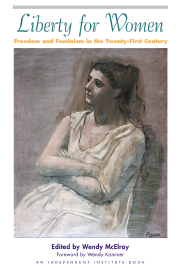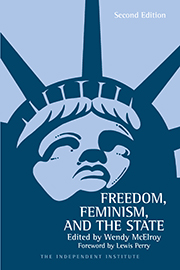“Civilizing Women: British Crusades in Colonial Sudan” is the latest book by Janice Boddy, Professor and Chair of the Department of Anthropology at the University of Toronto. The book is a self-conscious attempt to alter the terms of debate on an explosive issue: female genital mutilation (FGM). The issue is so explosive that fierce arguments surround the very question of what to call it. Those who defend or remain neutral on the practice tend to prefer the label ‘female genital cutting’ (FGC). In “Civilizing Women,” the index entry for ‘female genital mutilation’ reads “see female genital cutting.” In this review, when presenting my critique, I use the acronym FGM because nothing in Boddy’s book has softened my conviction that the practice is brutal child abuse. Out of respect for the author, however, I use FGC or other neutral terms when presenting her views.
Boddy’s purpose in “Civilizing Women” is two-fold.
First, she constructs a broad historical context through which to understand FGC as it was practiced between the years 1920 to 1946 in northern Sudan; these were years of British imperialism. Boddy asks the intensely interesting question, how did British colonialism and the practice of FGC affect each other?
Second, she provides insights into Sudanese women and their spiritual beliefs which are meant to defend FGC as a cultural practice that was and is misunderstood by the West; indeed, she defends the most extreme form of FGC, which is called infibulation or pharaonic circumcision. Boddy’s defense is sometimes oblique as when she calls for a “reconsideration”; it sometimes borders on a spiritual celebration. For example, she states that through circumcision “each sex is...ritually completed, made whole and pure...Yet the circumcised female body is more; it is a metonym and an icon for embattled local society, an oasis of reproductive continuity guarded by its own scar tissue...and the defensive efforts of local men.” She claims that “genital cutting creates the capacity for relationship between those able to confer the vital substances—blood and bone—and their attended social attachments to future kin.”
As both context for and as a defense of infibulation, however, “Civilizing Women” does not accomplish its goals.
Nevertheless, in important aspects, the book is superb. It provides fascinating analysis of British imperialism in northern Sudan. It captures the response of British men and women to FGC and well documents the efforts of British women to end the practice or, at least, reduce its damage through a combination of education, hygiene and law. The section on the sisters and nurse-midwives Gertrude and Mabel Wolff is worth the price of the book; nicknamed “the Wolves” because they never took ‘no’ for an answer, the sisters were instrumental in establishing the Midwives Training School in the Sudan. Boddy is to be applauded for the meticulous and original research that reflects months of digging through British and Sudanese archives. Moreover, her first-hand accounts of the Sudanese culture, which come from years of research ‘in the field’ are mesmerizing. Despite failing in its goals, the book delivers value.
Before expanding my critique of Civilizing Women’s treatment of FGM, it is useful to define the procedure.
FGM is the surgical removal of parts of the female genitalia for non-medical purposes; the justifications for FGM vary but they usually include the need to guarantee women’s purity—that is, her chastity or virginity. The procedure is usually performed on girls between the ages of four and eight but occurs as young as two-years-old. Although FGM is commonly associated with Islam, the procedure is not mandated by Islamic texts and has been practiced by other religions including Christianity.
The least invasive form of FGM is ‘Sunna circumcision’ by which the clitoral hood is removed without damaging the clitoris itself. Infibulation is the most invasive. The entire clitoris and labia minor (inner vaginal lips) are cut out so that female genitalia is a surface of raw flesh. The labia majora (outer lips) are then pared down with a knife and stitched together. Small holes are left over the urethra and vagina through which the girl can urinate and later menstruate. Often, girls must be immobilized for several weeks after the procedure to allow the wounds to heal together into scar tissue; medical problems such as severe bladder infections are common and lifelong side effects. Upon marriage, the vaginal opening is often cut wider to allow the husband sexual access. During the act of giving birth, the scar tissue is sliced open to permit the baby exit and, then, the genitals area is resewn. Boddy estimates that infibulation constitutes 15% of all FGM.
Boddy’s attempt to establish a coherent context for FGC within British imperialism fails on several grounds.
“Civilizing Women” appears to have a well-defined subject matter. The region is specified; the time-frame is set. But its focus is blurred at the outset by the book’s stated desire to be “allegory”—that is, an extended metaphor through which people and events within a narrative are equated with people and events that lie outside the narrative itself. In the introduction Boddy writes, “The book is not only about colonial efforts to end infibulation in Sudan....It is also a protracted allegory for imperialism in the early twenty-first century.”
Almost immediately the current invasion of Iraq is mentioned.
Whether political lessons can be applied from one period, region and culture to another is a fascinating question. Doing so is an ambitious goal from which Boddy takes a tiny step backward. In her second to last paragraph, she demotes “Civilizing Women” from allegory to analogy and concedes that even the “analogies it offers to present conditions are partial and indirect.” Nevertheless, in the last paragraph she returns to the language of allegory and sweeps the reader from “Victorian times” through “today.” Indeed, the last sentence of the book returns us to today—a time when “the concept of civilization sees its hard-won plurality eroded by that of a ‘freedom’ which threatens the existence of us all.” (By ‘freedom’ in quotes Boddy refers to Western values, including individualism and individual rights as opposed to collectivism and tribal rights.) In short, the concession to analogy sounds like the sort of hedging that permeates the book.
The blurring of political advocacy with anthropological research is one reason “Civilizing Women” fails to establish an intellectually satisfying context for FGM.
Another reason: the material presented as context often seems to have little relevance to FGC from 1920 to 1946. The issue of infibulation is barely mentioned in the first 90 pages or so past the Introduction (“Civilizing Women” is 320 pages in length.) Instead, the first section basically deals with events in the 1800s with emphasis upon the clash of British General Gordon and the Sudanese Mahdi. Boddy clearly wishes to present the two men as Jungian-style archetypes of Western imperialism versus Muslim culture and, then, to apply resulting insights to the issue of FGC in the 20th century.
Boddy’s presentation makes for fascinating history but the connection she wants to draw with infibulation are far from clear. Boddy herself recognizes this when she addresses the reader, “What, you will ask, does a book about efforts to stop female circumcision in Sudan have to do with General Gordon’s death?”
Boddy later explains that readers’ ‘need to know’ how colonial projects were “begun and how they were framed.” But Gordon and Mahdi are two men confronting each other over land and political power; although the racist arrogance of Gordon and his ilk impacted both genders, the concerns of Sudanese women and FGC were undoubtedly marginal to him if they had any importance at all. Indeed, Boddy traces the emergence of FGC as an active colonial concern to February of 1924, decades after Gordon’s death. In 1924, a circular was sent to all district commissioners in northern Sudan explaining what female circumcision was and outlining its effects.
Even then, the connection between British imperialism and infibulation doesn’t seem to be as close or continuous as Boddy argues. She admits that, in the 1920s the colonial state devoted “modest attention to women’s domestic education and health.” Then “for economic reasons the government sought to increase the population of Arab Sudanese.” Therefore authorities wished to discourage infibulation because they needed a larger labor force and the procedure was believed both to harm women’s fertility and to increase the mortality associated with child birth. Thus, she contends, imperialism crusaded against FGM. If this is true, then one would expect to find file cabinets of documents on the matter but supporting research seems scanty. At one point, Boddy quotes a memo on the education of Sudanese women; the quotation does not mention FGC. She comments, “Between the lines of this memo, and Symes’ unflattering comments above, lies the matter of female circumcision.” In re-reading both the memo and the comments, I didn’t see the “between the lines” part. If countering infibulation is to be accepted as core to the British colonization efforts, it would be good either to have it well established by British documents or to explain that absence.
The fact that ‘the Wolves’ had to argue vociferously with authorities for every uniform and piece of equipment at the Midwives school does not argue that FGMs were given priority. Indeed, Boddy acknowledges repeatedly that the authorities were reluctant to interfere with such an entrenched custom for fear of stirring general resistance. Instead, the authorities may have been pushed into anti-FGC policies by political pressure from home; a rising tide of outrage over the practice back in the British Isles as a result of a paper delivered in 1936 by Dr. D. R. Macdonald to the British Medical Association. This seems to be when policy in the Sudan began to shift. It is reasonable to assume that the truth about Sudanese women’s health back then is similar to the truth now; it is a matter of little importance to those in power except as it affects their power.
In short, Boddy does not establish a core and inevitable link between imperialism through the centuries and a crusade against infibulation either in 1920 to 1946 or now.
Another problem with Boddy’s context setting is related to her defense of infibulation. Male Sudanese are virtually absent from the discussion. Men were (and are) more powerful than women by far within Sudanese culture. Nevertheless, the role they played in perpetuating FGC is mentioned only in passing. Yet the benefits to men were clear. For example, infibulation provided men with the assurance of a virgin bride; the father and tribesmen were assured of a marriagable—that is, ‘saleable’—daughter. Boddy mentions such facts, to be sure, but does not explore them. Instead, the male domination upon which she concentrates is British colonialism.
Downplaying the vested interest and voices of Sudanese men, however, is important to Boddy’s defense of FGC. She wishes to present infibulation as a procedure perpetuated and desired by women. The former is unquestionably true. Women perpetuate infibulation by performing the surgery themselves and by presenting their daughters for cutting. Would they do so without the ubiquitous threat of violence and ostracism by men? No one knows but Boddy’s presentation argues that they would. Thus, even when men’s vested interest is acknowledged, Boddy moves quickly to women’s advocacy. On page 111, she writes, “...a number of men linked infibulation to the maintenance of a family’s honor, its social capital. Thus, the practice was expected to preserve women’s chastity and enhance their marriage-ability. Women, however, generally emphasized not sexuality but fertility; to them, infibulation ensured moral motherhood.”
“Civilizing Women” defends infibulation from a woman’s point of view from several angles.
The book’s narrative includes Interludes, which are personal commentaries of a few pages in which Boddy explains various aspects of Sudanese culture, especially the practice of zar—a ritual of spirit-possession. With relation to women, Boddy describes the ritual’s significance, “”By invoking historical (spirit) personae through the zar, northern Sudanese women rehearse and create their social memory, that which shapes experience in the present by reference to the past. In Sudan this is a motley record of foreign invasion...” Thus rituals such as zar and infibulation are inextricably linked to resisting oppressive invaders and to the preservation of culture by a beseiged people.
Another form of defense is the book’s rebuttal of the medical harms of infibulation. She dismisses an observation by Gerturd Wolff that indicates women were unwilling participants in the enclosing of their wombs. Wolff claimed that women delayed giving birth because they were terrified of having their genital area sliced open by a razor to allow delivery. She wrote, “the patient becomes quite hysterical and maniacal and has to be forcibly held down.” Instead Boddy points to the fact that women agree to have their scar tissue resewn as proof of their desire for infibulation. Whether they would desire to be resewn without the threat of ostracism and possible starvation if they did not agree is not addressed. Nor are other negative medical side effects given weight. Boddy acknowledges that the extremely painful procedure can cause shock and death. “Blood loss alone can kill an undernourished girl. Infection and septicemia are quite possible. Many women suffer lifelong bouts of urinary infections.” However, she seems to place the main blame for negative side effects upon circumstances like non-sterile conditions and not the procedure itself.
Boddy also stacks the argument by drawing direct parallels between critics of infibulation and the British imperialists. As accurate as she may be about the latter, most modern day critics bear no resemblance to General Gordon. I am fully convinced that the bulk of British imperialism was a racist bungle and a tragedy for those colonized. Due to my Irish heritage, I think Thomas Hobbes’ well-quoted observation “life is...nasty, brutish, and short” should read “nasty, British, and short.” And, yet, I categorically reject FGM. Any dismissal that I am therefore equivalent to a British imperialist merely avoids my arguments.
What are my arguments? I start with an argument for personal choice, for the right of every person to make peaceful choices with her or his own body; this human right transcends gender and culture. For me, opposing FGM is not about saving African or Arab women from making a non-Western choice; adult women should make their own choices with their own bodies. What I oppose is the imposition of FGM upon unconsenting women or upon girls who have not reached the age of consent. When someone imposes FGM upon another, then the procedure becomes an act of violence against an innocent person. Intervening in the act is as valid as rescuing a woman who is being raped. I dismiss the protestations of those who wish to impose FGM on four-year-girls in the same manner as I dismiss the rapist who complains that I’m interfering with his cultural view of women. I similarly disregard complaints from cannibals, slave owners, foot-binders and those who conduct human sacrifice. The common denominator: these people use violence to impose their cultural beliefs despite the great harms inflicted. They claim a ‘right’ denied to their victims, the right to choose a cultural practice. To me, infibulating a four-year-old is the very definition of cultural imperialism, not to mention mutilation.
Despite a well defined opinion that opposes Boddy’s own, I approached “Civilizing Women” as a respectful reader.
Boddy’s credentials are impressive. She conducted anthropological fieldwork in northern Sudan and integrated the first-hand data into earlier works such as “Wombs and Alien Spirits: Women, Men and the Zar Cult in Northern Sudan” (1989) from University of Wisconsin Press. In short, Boddy seems ideally positioned to explain the cultural significance of FMG to Western women who find it difficult to get past photographs of the procedure in order to explore the issue.
I hoped Boddy could provide insight into an intellectually bizarre encounter that is becoming more commonplace. In classrooms, in print and at conferences, a small but vocal number of women vigorously defend FGM and attack its critics as cultural bigots. In my experience, most of the defenders are Muslims who have undergone the procedure and are now passionate about the propriety of cutting young girls, including their daughters. I first encountered the response through a 1999 paper delivered by Catherine Mudime Akale at the 7th International Interdisciplinary Congress on Women; I read the paper online. Under the title “Who Has The Right To Name Female Genital Mutilation A Crime?”, Akale argues “FGM eradication activists frame their critique in terms of the demands of feminism and human rights. The implication of their perceptions of both these things is intrinsically Western, and the stand they take means inevitably that they are Westerners criticising African and Arab practices.” In short, critics are racial or cultural bigots.
This is a powerful criticism to hurl at politically correct feminists who are leaders in the global crusade against FGM. PC feminists are adamant about promoting diversity and acceptance of those who have been historically oppressed. Now these same women claim that feminists who attempt to “save them” are as oppressive and racist as the original Christianizing missionaries. The words “hoisted” and “petard” come to mind.
If the issue of FGM is to advance beyond accusations, then it must get past such exchanges and stop linking the issue to larger political agendas whether Western or Arab.
Let me step in that direction by ending in wholehearted agreement with one of Boddy’s main themes. She focuses on the outlawing of FGCs in 1946 and upon the political backlash it inspired. Indeed, outlawing the procedure acted to enshrine it within the culture as a symbol of resisting British authority.
Cultural practices cannot be ended by laws. Culture comes from the heart of a people and hearts can be cruel. They can also be hardened by opposition. The best way to change a cultural practice is through education and humanitarian appeal.









